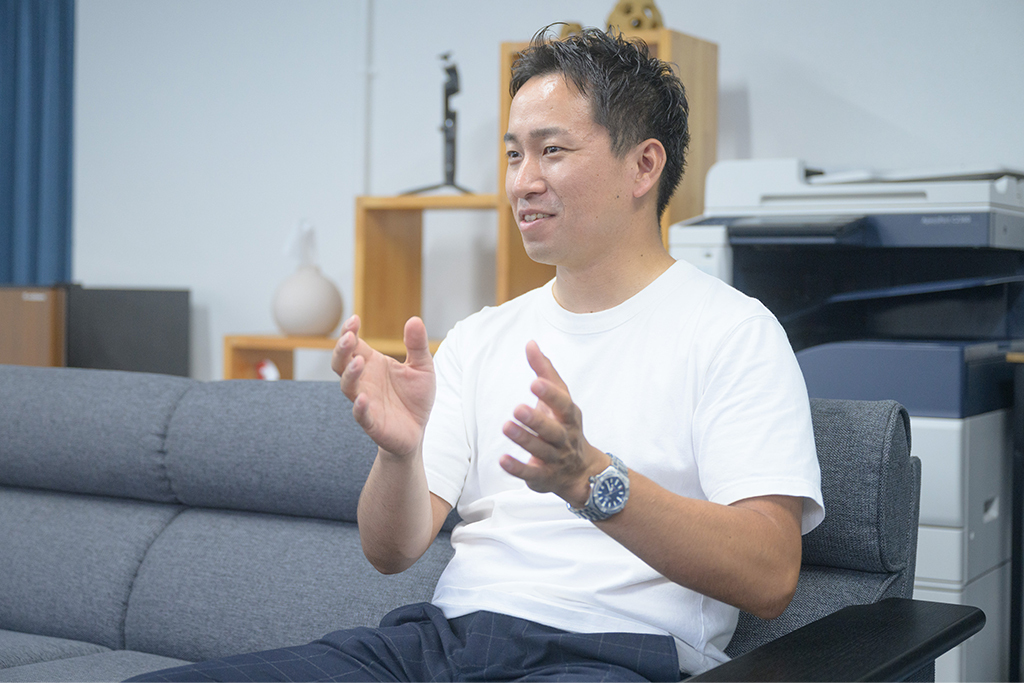Note: This website was automatically translated, so some terms or nuances may not be completely accurate.
From Iki to the World: Regenerating Seaweed with Artificial Reefs "Reef Balls" to Revive Abundant Fishing Grounds (Part 1)

Hisanori Tayama
General Incorporated Association Marine Habitat Iki

Koji Fuji
Dentsu Inc.
Various initiatives for carbon neutrality are underway in Japan. Among them, "blue carbon"—the process of carbon sequestration by marine ecosystems—is gaining significant attention. As a measure that simultaneously addresses global warming and preserves marine biodiversity, interest is growing in Japan, a nation surrounded by the sea.
Transformation SHOWCASE focuses on one such blue carbon initiative: the artificial reef "Reef Ball," which holds great potential. We bring you interviews with those working to promote it. In our first article, we spoke with Mr. Osamu Ikeda, President of Asahi Tech Co., Ltd. in Nagasaki Prefecture, who brought the Reef Ball, developed in the USA, to Japan.Working closely with Mr. Ikeda to promote this technology is Hisanori Tayama, Representative Director of the General Incorporated Association Marine Habitat Iki. For our second article, we focus on Mr. Tayama's activities, including conducting Reef Ball demonstration experiments in his hometown of Iki City, where he was born and raised. Takashi Fuji of Dentsu Inc. interviews him.
His Desire to Contribute Locally and His Encounter with the Leaf Ball

Success in seaweed cultivation through the Leaf Ball demonstration experiment

Mr. Tayama, who promotes Reef Balls in his hometown of Iki, says that steady efforts and demonstration experiments are what gradually increase the number of people who understand the value. In the second part, we'll cover Mr. Tayama's determination to pursue this as a business and report on the demonstration experiments.
The information published at this time is as follows.
Was this article helpful?
Newsletter registration is here
We select and publish important news every day
For inquiries about this article
Author

Hisanori Tayama
General Incorporated Association Marine Habitat Iki
Representative Director, Asahi Tech Co., Ltd. Project Manager
Born May 13, 1991, in Iki City, Nagasaki Prefecture. Graduated from Nihon Bunri University's Faculty of Business and Economics. Played baseball for the university's varsity team during his student years. Currently enrolled at the Graduate School of Business and Innovation. At age 30, driven by a desire to "contribute to the island," he decided to return home. Inspired by his encounter with Leaf Ball, he established the General Incorporated Association Marine Habitat Iki with the goal of overcoming "seabed desertification" (iso-yake). From his hometown of Iki Island, he is challenging himself to create a role model for solving serious marine environmental issues.

Koji Fuji
Dentsu Inc.
Marketing Division 7, Solution Production Division 1
Chief Innovation Director
As a specialist in the environment and energy sector, I have been part of Dentsu Inc.'s cross-organizational unit DEMS for over 10 years, responsible for business development with domestic and international energy companies and startups. Since 2019, I have led the decarbonization and carbon neutrality domain, establishing "dentsu carbon neutral solutions" to coordinate and deliver group-wide carbon neutrality solutions and initiatives. Collaborated with internal and external members to develop behavioral change knowledge for decarbonized lifestyles using behavioral economics (nudge techniques) with the Ministry of the Environment, and to advance the Blue Carbon Project addressing coastal desertification—a critical issue for Japan as a maritime nation. Currently working daily toward the goal of positioning the 2025 Osaka-Kansai Expo as the "Ocean Expo," showcasing Japan's unique initiatives to the world.

